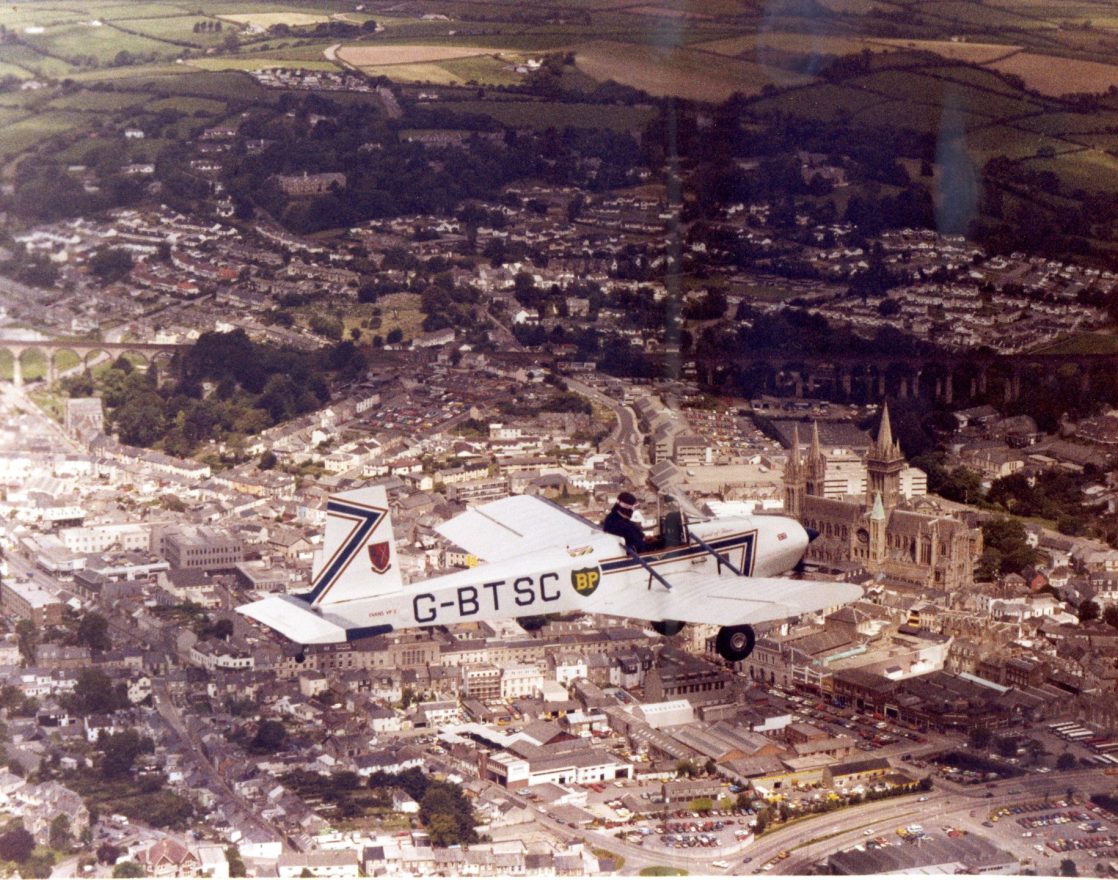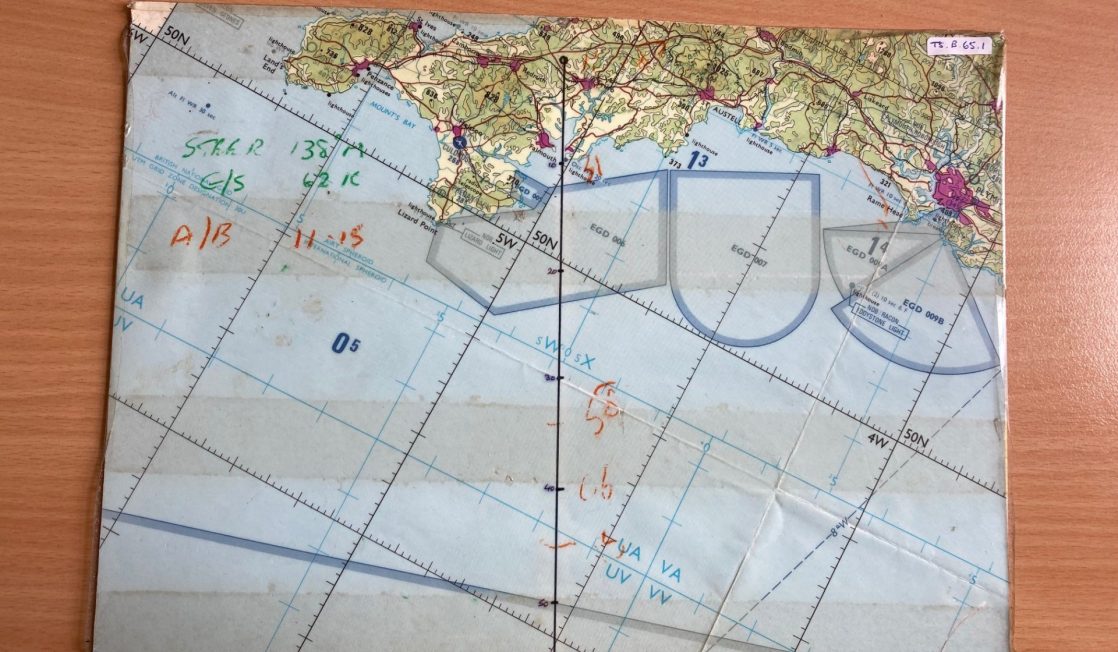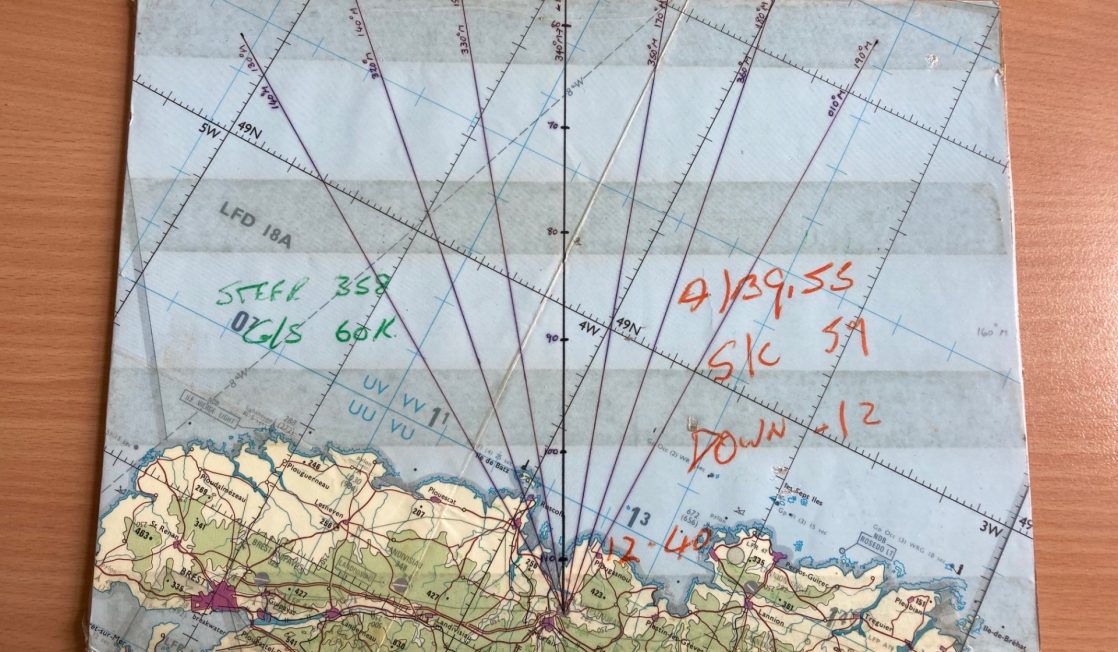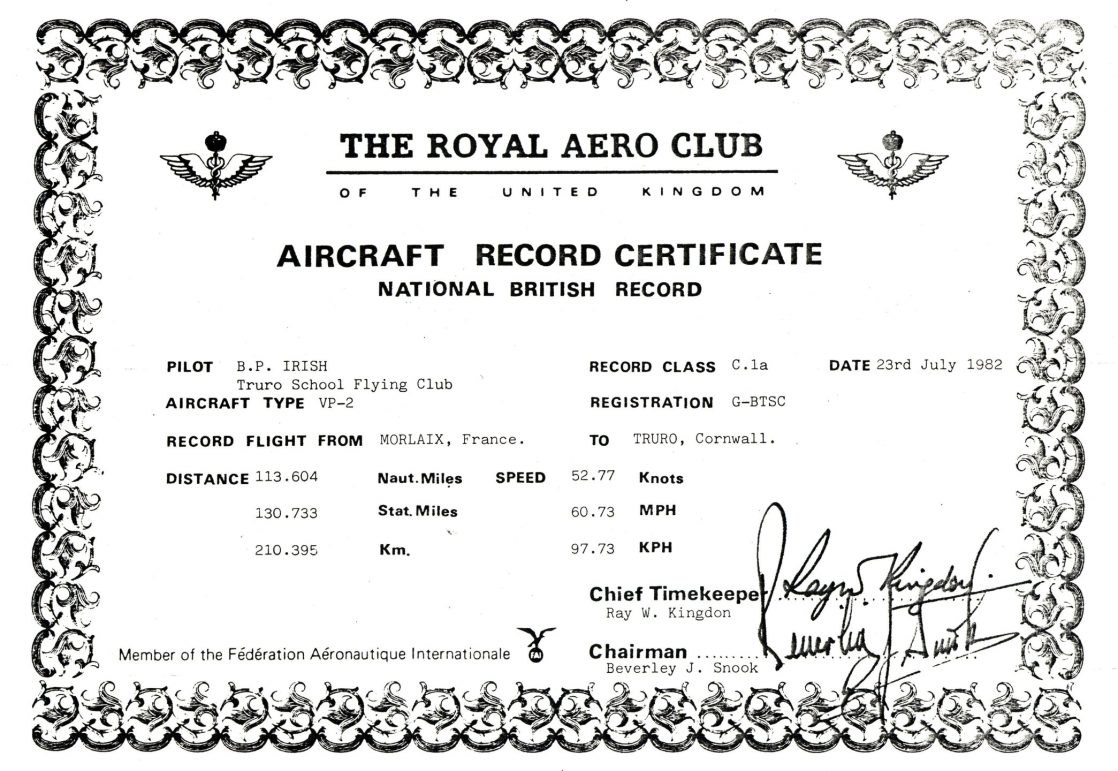Back
- Nursery
- Prep
- Senior
- Sixth
- Home
- Contact Us
- Admissions
- Boarding
Date Posted... Jul 2nd 2022
Categories..
July 2022 marks 40 years since the Spirit of Truro, an Evans VP2 plane built by the School, flew across the English Channel from Cornwall to Brittany.
The plane was the first major project undertaken in the newly built workshop, which had been built with the Sports Hall by pupils, staff and parents in the 1970s. Dennis Keam helped build the new block and once it opened he was keen ‘that he should produce something sensational’ [1] and ‘to show the rest of Britain what can be achieved by youthful enthusiasm and effective craft teaching’.
We decided to build a plane because it was the most challenging thing we could think of. The idea was to show just what go-ahead youngsters can achieve within a planned craft teaching programme. 75% of aircraft projects are never completed. This one was going to be different. [2]
It was ‘a very far cry from the toothbrush rack one remembers attracting much unfavourable comment at the planning and production stage at boarding school some years ago!’ [3] and believed to be the first plane built for flight by schoolboys. Initially plans were made for two aircraft to be built; the Evans VP2 and ‘the unconventional miniature ‘Quickie’ aircraft costing only £2,500 which are the rage in America’ or the LongEz. ‘“If we go on like this we’ll end up with our own private air force” says Mr Keam with a chuckle’ [4].
Work began in the summer term of 1978. Plans for the VP2 were bought from the USA for £42 where it was a very popular plane among private flyers. The project was started ‘without any previous experience, without any money but with limitless enthusiasm’[5]. Eighty boys took part in the project and two boys who worked on the plane continually were Fred Chan of Hong Kong and David Walton of Newquay [6].
Over the next few years the project took shape and was completed in time for the Prince of Wales’ visit in May 1980, for the School’s centenary, when he officially named the plane ‘Spirit of Truro’. Test flights soon followed. Then, while waiting for a new engine, the plane was taken to Farnborough Interntational Air Show in 1980, the ‘showpiece for the aerospace industries’ [7]. The first public flight took place on 17 June 1981, when the plane flew 25 miles around Truro and over the school.

It did not take long for the idea of a longer flight in the Spirit of Truro formed. The school’s Flying Club reported that ‘BP would like the aircraft when flying programme completed, for it to fly the Bleriot route across the Channel’ [8]. It was then suggested that instead of the Dover to Calais route a longer journey could be undertaken, between Truro and its twin town of Morlaix, in Brittany. BP provided help with the publicity and getting permits in France; preparations were ready by the summer of 1982 and the record breaking flight took off at 10.15am from Tregavethan on 20 July. ‘Looking at its best in the bright sun with the school colours proudly borne Mr Irish circled the private airfield once and was away for the channel’ [9].
The school and city’s accompanying party dashed to St Mawgan to the Cessna 12-seater plane. Although they were slightly delayed by HM Customs, their arrival at Morlaix coincided with the slower Evans VP2.
If our flight had been bumpy then rather us than Phil in his open cockpit, almost at sea level, as without radar and relying on his maps and compass he came to terms with the unexpected mist off the French coast. This was how flying used to be in the pioneering days and now ‘The Spirit of Truro’ had reminded us again. Fuel supply was always a problem and Phil Irish solved it… with a converted bicycle pump as he ‘topped up’ his tank from the spare specially installed alongside him on the narrow seat [10].

Pilot's map for the cross-Channel flight

The plane and accompanying party were met by the Deputy Mayor of Morlaix who was presented with a framed photograph of the plane on its maiden flight over Truro. The French press ‘out in force, was ecstatic’.
It was reported in the Ouest France that ‘Le – do it yourself – anglais va loin et prenet même des ailes. Philip Irish, businessman anglais et anuèn pilote de la RAF vient de le prouveur’. He had come, they marvelled, ‘dans un miniscule avion monoplane construit par les élèves d’une école methodiste de la ville jumelle de Morlaix’. When they saw the plaque recording that the plane was named by ‘Prince Charles d’Angleterre’ the cameras whirred again [11].
The party then toured Morlaix with the twinning committee, visiting the Hotel de Ville and older parts of the city as well as ‘souvenir shopping and Breton paté bought by those who had remembered currency or were in credit with Mr Worsley White’s bureau de change’. The accompanying party had to return to Newquay by 5pm and so left the Spirit of Truro to follow on the next day, although it took slightly longer because of fog. The return flight ‘that established the record’ took place on the 23 July.
The time taken was two hours nine minutes at an average speed of 52.77 knots and fuel consumption of 44 litres. Bleriot crossed from Calais to Dover in jus t over half an hour averaging 47 mph. If speed is the yardstick, the Bleriot XI and the Evans VP2 have quite a lot in common. Without being a fast aircraft it has durability of construction and operational reliability. Both flights by the VP2 were completed without incident…

[1] Headmaster D.W. Burrell correspondence to Calgary Board of Education, January 1983
[2] News from BP Oil, June 17
[3] Westwings, March 1979
[4] News from BP Oil, June 17
[5] Aeroplane Monthly, October 1981, p.555
[6] News from BP Oil, June 17
[7] Dennis Keam, Truro School Centenary Magazine, 1980
[8] Truro School Flying Club minutes 25 May 1981
[9] Truro School Terraces, 1983
[10] Terraces, 1983
[11] Terraces, 1983
Truro School is part of the Methodist Independent Schools Trust (MIST)
MIST Registered Office: 66 Lincoln’s Inn Fields, London WC2A 3LH
Charity No. 1142794
Company No. 7649422